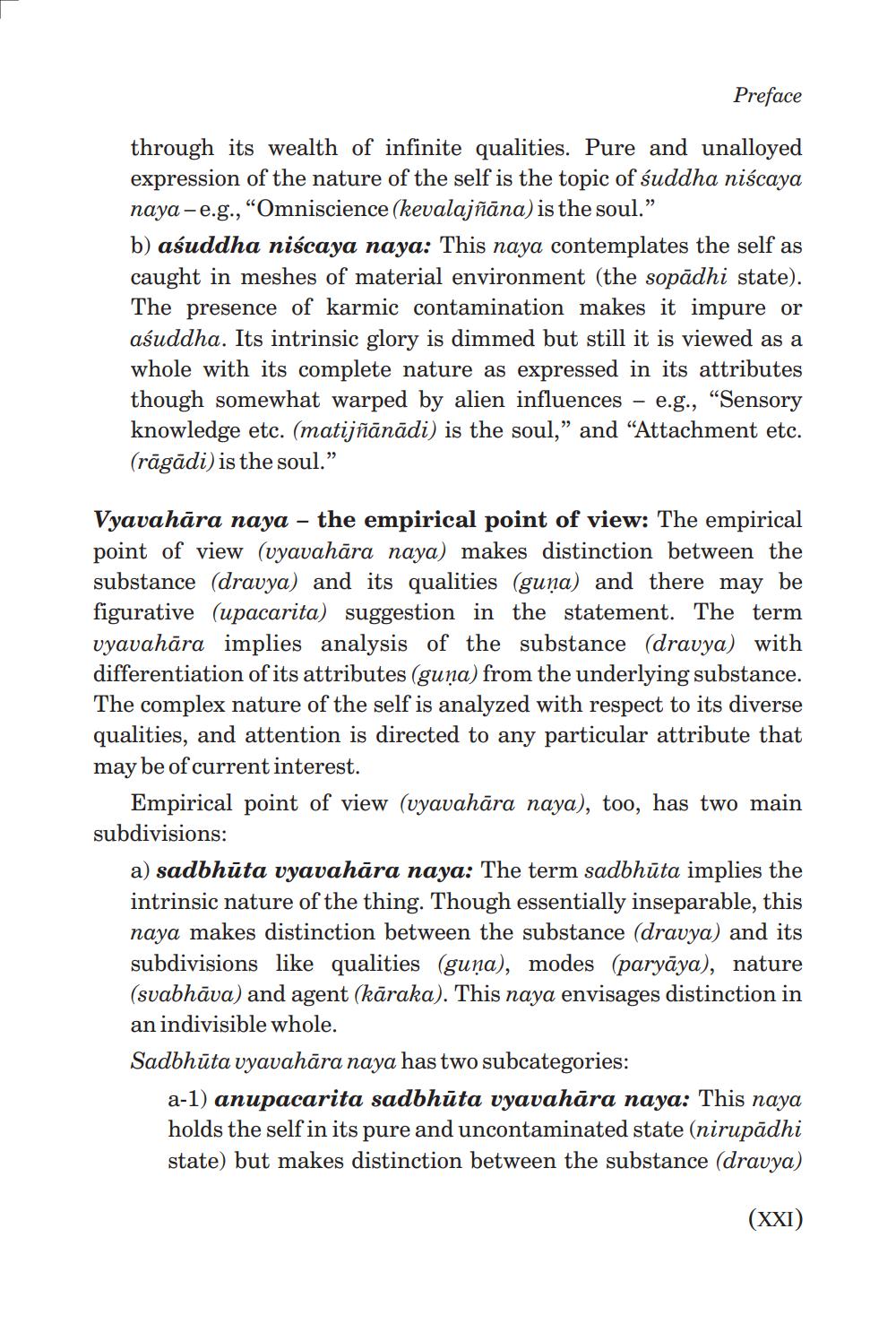________________
Preface
through its wealth of infinite qualities. Pure and unalloyed expression of the nature of the self is the topic of suddha niscaya naya-e.g., "Omniscience (kevalajñāna) is the soul."
b) aśuddha niscaya naya: This naya contemplates the self as caught in meshes of material environment (the sopadhi state). The presence of karmic contamination makes it impure or aśuddha. Its intrinsic glory is dimmed but still it is viewed as a whole with its complete nature as expressed in its attributes though somewhat warped by alien influences e.g., "Sensory knowledge etc. (matijñānādi) is the soul," and "Attachment etc. (rāgādi) is the soul."
Vyavahāra naya- the empirical point of view: The empirical point of view (vyavahara naya) makes distinction between the substance (dravya) and its qualities (guna) and there may be figurative (upacarita) suggestion in the statement. The term vyavahāra implies analysis of the substance (dravya) with differentiation of its attributes (guna) from the underlying substance. The complex nature of the self is analyzed with respect to its diverse qualities, and attention is directed to any particular attribute that may be of current interest.
Empirical point of view (vyavahara naya), too, has two main subdivisions:
a) sadbhūta vyavahāra naya: The term sadbhūta implies the intrinsic nature of the thing. Though essentially inseparable, this naya makes distinction between the substance (dravya) and its subdivisions like qualities (guna), modes (paryāya), nature (svabhāva) and agent (kāraka). This naya envisages distinction in an indivisible whole.
Sadbhūta vyavahara naya has two subcategories:
a-1) anupacarita sadbhūta vyavahāra naya: This naya holds the self in its pure and uncontaminated state (nirupadhi state) but makes distinction between the substance (dravya)
(XXI)




